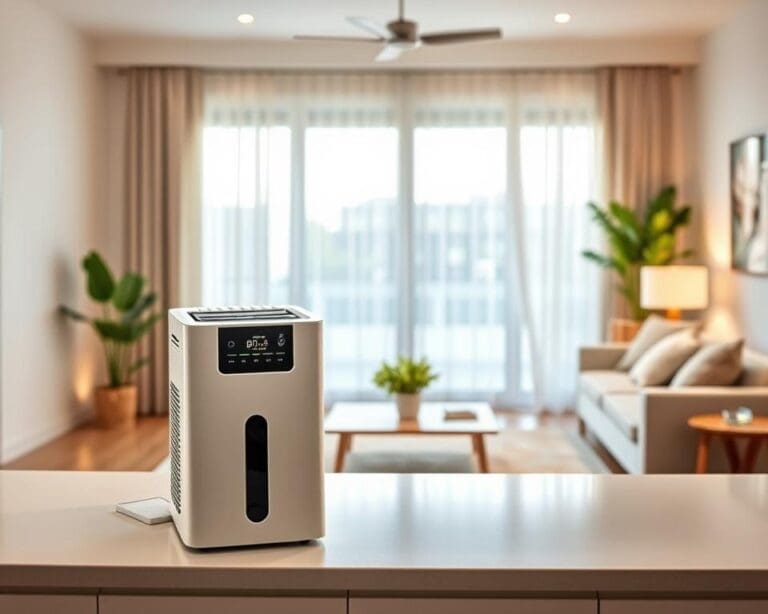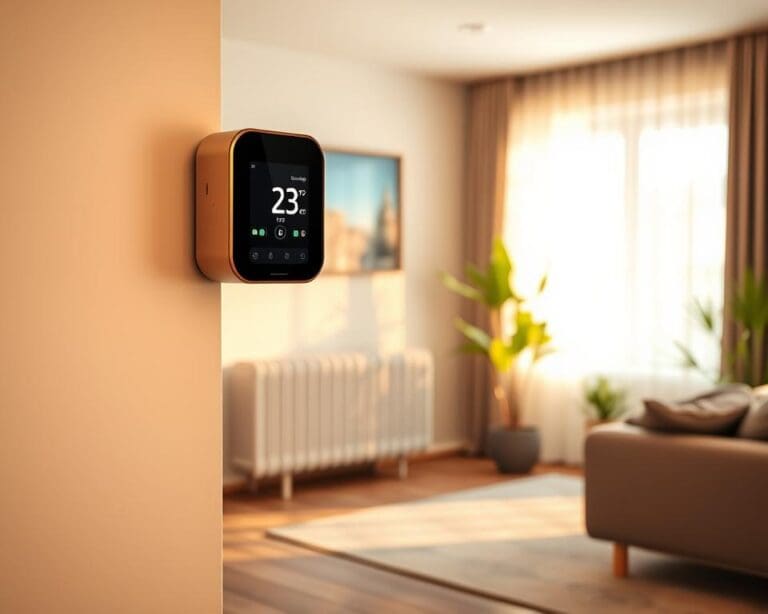Koken is een kunst en een passie, waarbij de juiste tools een essentiële rol spelen in het creëren van heerlijke maaltijden. Eén van de meest fundamentele instrumenten in iedere keuken is de snijplank, die niet alleen het snijproces vergemakkelijkt, maar ook bijdraagt aan de voedselveiligheid en hygiëne. In dit artikel zullen we de verschillende soorten snijplanken, hun toepassingen en belangrijke functies onderzoeken, zodat u de perfecte snijplank kunt kiezen voor uw efficiënte keukenwerk.
Key Takeaways
- Snijplanken zijn cruciaal voor veilig en efficiënt keukenwerk.
- Houten en kunststof snijplanken hebben elk hun eigen voor- en nadelen.
- De juiste maat en vorm van de snijplank maken het werk in de keuken gemakkelijker.
- Antislip- en hygiënekenmerken zijn essentieel voor de veiligheid en het gemak.
- Goed onderhoud en zorg voor snijplanken verlengen hun levensduur.
The Essence of an Efficient Kitchen
A well-equipped kitchen is the foundation of a smooth and productive cooking experience. At the heart of this efficient kitchen lies an essential tool: the cutting board. These unassuming platforms are the workhorses of food preparation, playing a crucial role in transforming raw ingredients into culinary masterpieces.
Why Cutting Boards are Crucial
Cutting boards serve as the first line of defense for your valuable countertops, protecting them from scratches, cuts, and stains. They provide a stable, non-slip surface for slicing, dicing, and chopping, ensuring precise and controlled movements with your houten snijplanken or kunststof snijplanken. Moreover, cutting boards help maintain the sharpness of your knives, prolonging their lifespan and making every cut more efficient.
The Benefits of Using Cutting Boards
- Safeguard your countertops from damage
- Offer a secure and hygienische snijplanken surface for food preparation
- Preserve the sharpness of your kitchen knives
- Facilitate easier cleaning and antislip snijplanken for enhanced safety
By incorporating the right cutting boards into your kitchen, you can elevate the overall efficiency and enjoyment of your cooking experience. From protecting your surfaces to ensuring a seamless food preparation process, these unsung heroes are truly the backbone of an organized and productive kitchen.
Types of Cutting Boards and Their Applications
When it comes to the kitchen, the humble cutting board plays a crucial role in ensuring efficient and safe food preparation. Among the diverse options available, two popular choices stand out: wooden cutting boards and plastic cutting boards. Each material offers unique advantages that cater to different kitchen needs and preferences.
Wooden Cutting Boards: Durable and Stylish
Wooden cutting boards have long been a favorite among home cooks and professional chefs alike. Crafted from high-quality houten snijplanken, these boards boast exceptional durability, making them a reliable choice for heavy-duty cutting tasks. Their natural aesthetic also adds a touch of warmth and character to any kitchen, seamlessly blending with various decor styles.
Moreover, wooden cutting boards are renowned for their ability to maintain the sharpness of knives, as their surface is gentler on blade edges compared to some other materials. This means your knives will stay in top condition, allowing you to slice, dice, and chop with precision.
Plastic Cutting Boards: Hygienic and Affordable
Kunststof snijplanken, on the other hand, offer a practical and hygienische solution for busy kitchens. These boards are typically easy to clean, making them a popular choice for tasks that involve raw meats or seafood. Their non-porous surface helps prevent the absorption of odors and stains, ensuring a hygienic food preparation surface.
Additionally, plastic cutting boards are often more affordable than their wooden counterparts, making them an accessible option for home cooks and professional kitchens alike. They come in a variety of colors and designs, allowing you to coordinate them with your kitchen’s aesthetic.
| Feature | Wooden Cutting Boards | Plastic Cutting Boards |
|---|---|---|
| Durability | Highly durable, can withstand heavy use | Durable, but may show wear and tear over time |
| Aesthetics | Adds a natural, warm touch to the kitchen | Available in a range of colors and designs |
| Knife Maintenance | Helps maintain knife sharpness | May cause some dulling of knife blades |
| Hygiene | Can absorb odors and stains over time | Non-porous surface, easy to clean and disinfect |
| Cost | Typically more expensive than plastic | Generally more affordable |
Cutting Boards for Efficient Kitchen Work
Selecting the right snijplanken voor efficiënt werken in de keuken can significantly improve the efficiency of your kitchen workflow. By carefully choosing cutting boards that cater to your specific needs, you can streamline your food preparation process and work more quickly and effectively.
One important factor to consider is the size of the cutting board. Larger grote snijplanken offer ample workspace, making it easier to handle larger ingredients and prepare multiple items simultaneously. This can be particularly beneficial when cooking for a crowd or engaging in complex meal preparations.
- Larger cutting boards provide more surface area, allowing you to chop, dice, and slice with ease.
- They can accommodate a variety of ingredients and tools, reducing the need for constant board swapping.
- With more room to work, you can minimize the risk of accidents and keep your kitchen organized during the cooking process.
In addition to size, the material of the cutting board also plays a crucial role in the efficiency of your kitchen work. Durable and easy-to-clean options, such as wood or plastic, can streamline your food preparation and cleanup tasks, saving you valuable time.
“The right cutting board can transform your kitchen into a well-oiled machine, empowering you to work with speed and precision.”
By carefully selecting the appropriate snijplanken voor efficiënt werken in de keuken and grote snijplanken, you can unlock the full potential of your kitchen and elevate your culinary skills to new heights.
Size and Shape: Making the Right Choice
When it comes to choosing the perfect cutting board for your kitchen, the size and shape can make all the difference. The right dimensions and design can significantly enhance your efficiency and ease of food preparation. Let’s explore the benefits of opting for large cutting boards to streamline your culinary endeavors.
Large Cutting Boards for Easier Prep
Investing in a large cutting board offers numerous advantages. With ample surface area, you can effortlessly accommodate larger ingredients, such as whole vegetables or sizeable cuts of meat. This extra space allows you to chop, dice, and slice without constantly rearranging or relocating your ingredients. The convenience of a large cutting board can save you valuable time and effort during busy meal preparation.
Moreover, a generous cutting surface encourages better organization and workflow in the kitchen. You can designate specific areas for different tasks, such as one section for chopping vegetables and another for slicing proteins. This strategic layout enhances your overall efficiency and reduces the risk of cross-contamination between food items.
| Cutting Board Size | Recommended Uses |
|---|---|
| 18″ x 24″ | Ideal for everyday meal preparation, accommodating a variety of ingredients |
| 24″ x 18″ | Suitable for larger tasks, such as preparing whole chickens or roasts |
| 24″ x 36″ | Perfect for commercial kitchens or ambitious home cooks, offering ample workspace |
When selecting the size of your cutting boards, consider the specific needs of your kitchen and the types of dishes you typically prepare. A versatile large cutting board can streamline your culinary experiences and make meal preparation a breeze, ensuring optimal efficiency and workflow in your kitchen.
Anti-Slip and Hygiene: Essential Features
In the world of efficient kitchen work, the importance of antislip snijplanken (anti-slip cutting boards) and hygienische snijplanken (hygienic cutting boards) cannot be overstated. These essential features play a vital role in creating a safe and organized food preparation environment, ensuring both productivity and food safety.
One of the primary benefits of anti-slip cutting boards is their ability to provide a stable and secure surface for cutting and slicing. This stability helps prevent accidental slips and cuts, reducing the risk of injuries and accidents in the kitchen. Additionally, the non-slip design ensures that ingredients and tools remain in their designated positions, minimizing the chances of spills and messes.
Hygiene is another crucial aspect when it comes to cutting boards. Proper food handling and sanitization are paramount in any professional kitchen, and hygienic cutting boards play a significant role in maintaining a clean and safe workspace. These boards are often made from materials that are easy to clean and resistant to the buildup of harmful bacteria, helping to prevent cross-contamination and ensure the freshness and integrity of the food being prepared.
Key Features of Anti-Slip and Hygienic Cutting Boards
- Non-slip surface to prevent accidents and improve stability
- Durable and easy-to-clean materials that resist bacterial growth
- Versatile designs to accommodate a variety of kitchen tasks
- Tapered edges to contain spills and facilitate efficient food preparation
- Dedicated grooves or channels to capture juices and liquids
| Feature | Benefit |
|---|---|
| Anti-slip surface | Improved stability and safety during cutting and slicing |
| Hygienic materials | Reduced risk of cross-contamination and bacterial growth |
| Versatile design | Accommodates a wide range of kitchen tasks and food preparation needs |
| Tapered edges and liquid capture | Efficient containment of spills and easy cleanup |
By investing in antislip snijplanken and hygienische snijplanken, kitchen professionals can create a more organized, efficient, and safe workspace, ultimately leading to improved productivity and better food quality. These essential features are the cornerstones of a well-designed and functional kitchen environment.
Sharp Knives: The Perfect Match
When it comes to efficient kitchen work, pairing your cutting boards with the right knives is crucial. The sharpness of your blades can make all the difference in ensuring a smooth, effortless food preparation experience. As you select the ideal cutting boards for your kitchen, it’s essential to also invest in a set of scherpe messen voor snijplanken that will complement your workspace perfectly.
Tips for Choosing the Right Knives
Selecting the appropriate knives to use with your cutting boards requires careful consideration. Here are some tips to help you make the right choice:
- Consider the task at hand: Different cutting tasks, such as chopping, slicing, or dicing, may require specialized knives. Ensure you have a variety of knife styles to match your needs.
- Prioritize sharpness: Dull knives can be dangerous and make food preparation unnecessarily difficult. Opt for high-quality, scherpe messen voor snijplanken that retain their edge for longer.
- Choose the right size: The size of your knives should be proportionate to the size of your cutting boards. Larger boards may require longer blades for efficient cutting.
- Consider the material: Knives can be made from a variety of materials, such as stainless steel or ceramic. Each type has its own unique benefits, so choose the one that best suits your preferences and kitchen needs.
By pairing your cutting boards with the right set of sharp, versatile knives, you’ll be able to tackle any culinary task with ease and efficiency. Investing in the perfect knife-board combination can truly transform your kitchen workflow and elevate your cooking experience.
Maintenance and Care of Cutting Boards
Proper care and maintenance of your cutting boards are essential for extending their lifespan and ensuring food safety in your kitchen. Whether you prefer wooden or plastic cutting boards, understanding the right cleaning methods can go a long way in keeping your kitchen equipment in top-notch condition.
Cleaning Methods for Different Materials
The cleaning approach you choose will depend on the type of cutting board you have. For wooden cutting boards, a gentle scrub with warm soapy water, followed by a thorough rinse, is recommended. Avoid submerging wooden boards in water, as this can cause warping and cracking over time. Instead, wipe them down and dry them promptly after use.
On the other hand, plastic cutting boards can be cleaned more thoroughly by placing them in the dishwasher. This helps to remove any stubborn stains or odors that may linger. However, be mindful of using the appropriate cleaning cycle to prevent warping or damage to the board.
| Material | Cleaning Method | Drying Recommendation |
|---|---|---|
| Wooden Cutting Boards | Warm soapy water, rinse thoroughly | Wipe down and dry promptly |
| Plastic Cutting Boards | Dishwasher-safe | Air dry or wipe down |
Regardless of the material, it’s important to keep your cutting boards clean and well-maintained to ensure the safety and verzorging snijplanken of your food preparation. Regularly inspecting them for any cracks, grooves, or damage can also help you identify when it’s time to replace them, further promoting a hygienic kitchen environment.
Food Safety: Critical Considerations
When it comes to voedselveiligheid, or food safety, the cutting board is a crucial element in your kitchen. These unsung heroes of efficient meal preparation play a vital role in protecting you and your family from potential foodborne illnesses. As you navigate the world of snijplanken, or cutting boards, understanding the best practices for maintaining food safety is paramount.
One of the primary considerations is to use separate cutting boards for raw meats, poultry, and seafood, and another for fruits, vegetables, and cooked foods. This simple step helps prevent cross-contamination, a common cause of food poisoning. Additionally, it’s essential to thoroughly clean and sanitize your cutting boards after each use, using hot soapy water or a disinfecting solution.
- Designate separate cutting boards for raw and cooked foods
- Clean and sanitize cutting boards after each use
- Replace worn or deeply scratched cutting boards to minimize bacteria buildup
It’s also important to replace worn or deeply scratched cutting boards, as these can harbor harmful bacteria and are more difficult to clean effectively. By following these simple guidelines, you can ensure that your voedselveiligheid and snijplanken work hand-in-hand to provide a safe and hygienic food preparation environment.
“Food safety should always be the top priority when it comes to cutting boards and food preparation.” – Chef Stéphane Récalt
Remember, a well-maintained cutting board is not only essential for efficient kitchen work but also plays a critical role in keeping your family safe and healthy. By prioritizing voedselveiligheid and proper cutting board care, you can enjoy the confidence that comes with knowing your kitchen is a safe haven for delicious and nourishing meals.
Professional Cutting Boards for the Discerning Chef
For the serious home cook or professional chef, investing in high-quality, durable cutting boards can elevate your kitchen performance. These professionele snijplanken are designed with superior features that cater to the needs of the discerning culinary artist. From exceptional durability to enhanced functionality, these cutting boards offer unparalleled efficiency in the kitchen.
Crafted with premium materials and engineered to withstand the rigors of professional-grade use, professionele snijplanken are built to last. Their sturdy construction ensures they can handle heavy-duty tasks without warping, cracking, or losing their pristine condition over time. This makes them an invaluable asset for chefs who demand consistent performance and a long-lasting investment in their kitchen tools.
Beyond their robust design, professionele snijplanken also boast exceptional functionality. With features such as non-slip surfaces, precise measurements, and thoughtful ergonomics, these cutting boards streamline the prep work, allowing chefs to work with unparalleled efficiency. The attention to detail in their design translates directly to improved workflow and a more enjoyable cooking experience for the discerning culinary professional.













